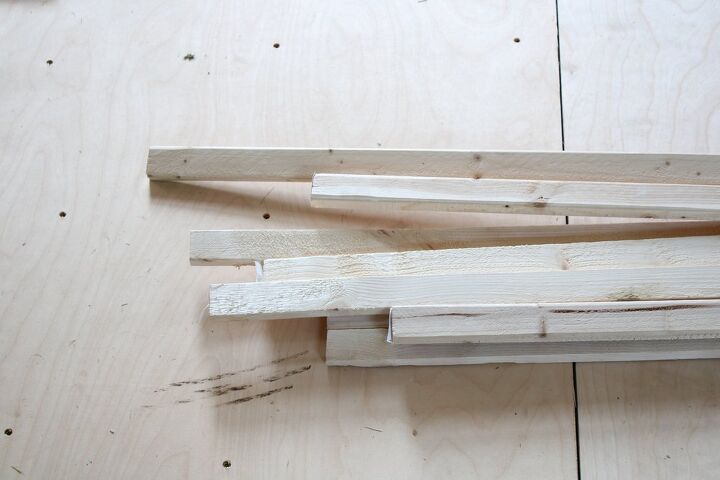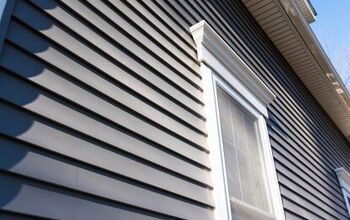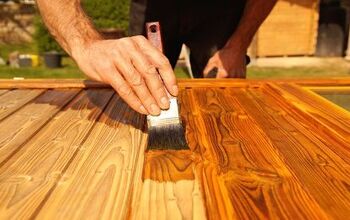Composite Vs. Wood Shims: What Are The Major Differences?

Shims come in handy in countless projects from fixing squeaky stairs to leveling out floorboards. The average homeowner has to choose between composite and wood shims. It can be hard to decide between the two, so what’s the difference?
Composite shims are more durable than wood and they aren’t sensitive to water and moisture. Wood shims are often made of cedar and pine, and they are cheaper than composite shims. It is easier to glue wood shims together and snap them apart than composite shims, but composite shims have more practical uses.
Composite and wood shims are both useful for leveling floorboards, filling gaps in your deck, and fixing loud steps. Follow along as we explore the difference between composite shims and wood, and see which is better.
Do You Need a Window and Door Contractor?
Get free, zero-commitment quotes from pro contractors near you.

What Is a Shim?
A shim is a thin piece of material that you often wedge between two other building materials. Shims are often made out of plastic (composite), or wood. You can put a shim in a gap to increase the structural integrity and ensure a tight fit.
Shims are useful for projects such as leveling floorboards that are uneven and noisy. You can also use shims as a last-ditch effort to make components, such as deck boards, fit together. Carefully place shims and you can increase productivity, reduce working time, and ensure a perfect fit.
Wood vs. Composite Shims
It is tough to decide between wood and composite shims when there are no immediate differences. However, materials such as wood and plastic are quite different, and that is true when it comes to shims. Let’s take a look at the difference between wood and composite shims.
Durability
Both wood and composite shims are durable and useful for many applications. Wood shims are typically made of cedar or pine, and those are sturdy woods. However, wood is easily weakened by water and moisture, and durability may be short-lived.
Composite shims come as thin plastic wedges and generally have the same thickness as wood shims. Plastic is sturdy, long-lasting, and resilient to water which makes composite shims more durable than wood shims. The durable waterproof properties of composite shims make them ideal for more uses than wood shims.
Uses
Wood shims limit you in that you can’t use them for jobs that have water exposure. Water can wear down wood shims quickly, so you can’t use them for outdoor applications. Wood shims are great for leveling subflooring and flooring because of their shape and thickness.
Composite shims have more uses than wood shims because they don’t have limitations like wood shims. You can use composite shims for filling gaps between deck boards, for example, and that’s not ideal for wood shims. However, you might as well use wood shims if you have a wooden deck.
Installation
You can easily install wood or composite shims, but wood shims are even easier. Wood shims make for quick installation because you can easily glue them together and in place. Composite shims don’t take to glue as well as wood does, and that can make them tricky to install.
Luckily, you can easily remove excess material from composite and wood shims with a saw. You can even pull the excess material away by hand in most cases with no trouble.
Price
A 12-pack of 1.5” composite shims can cost under $2 at places like Home Depot, and that is a great deal. Larger deals of composite shims cost just over $100 and are ideal for flooring and deck jobs. Composite shims are pricier than wood shims, but the added durability makes up for it.
Wood shims are cheaper than composite shims, and a 12-pack of 1.5” composite shims costs $1.80. Bulk wood shims are also cheaper than composite, and you can get a 120-count box of 8” shims for $120. You can save money with wood shims, but they are useless for fewer applications than composite shims.
Some DIY-oriented homeowners even cut their shims to save money and make the most of excess wood. Wood shims are as good as free in that case, but they aren’t very expensive to buy in the first place. It is worth the money to purchase wood shims, however, so that you can ensure that they are well-suited for your uses.
Are Composite Or Wood Shims Better?
Composite shims are better than wood shims when it comes to durability and practical uses. You can use plastic shims for much more than wood because you don’t have to worry about moisture and water damage.
Wood shims are great for the money and they are certainly cheaper than composite shims. You can easily glue wood shims together without a hassle, and they’re great for beginners. It can take more work to install composite shims than wood shims in some cases.
Composite shims are the best choice if you want to play it safe when it comes to water damage. They are a great option even if the area wouldn’t normally have water, like floorboards, because disasters happen. You can use both composite and wood shims for countless projects, but composite shims work for almost every project.
Metal Shims
Some homeowners forego composite and wood shims altogether in favor of metal shims. Water can damage metal shims just like wood shims, but they are quite durable. You can weld metal shims and manipulate their shape or size to ensure a great fit.
Metal shims are only ideal for large jobs and manufacturing, and the average homeowner doesn’t need them. They are thick and durable, but metal shims can incur damage from water, vibration, and movement.
A pack of 6 metal shims often costs $13, and they are the priciest kind of shim you can find. You won’t need metal shims for most home applications, and it is better to choose composite or wood shims.
Related Questions
What are wood shims made of?
Wood shims are often made of thinly sliced wedges of cedar or pine. You can technically make shims out of any wood that is easy to work with, but cedar and pine are ideal.
Are composite shims waterproof?
Yes, composite shims are waterproof because they are made of plastic. You won’t have to worry about pests eating your shims either because they are resistant to them.
Do composite shims rot?
No composite shims do not rot over time as wood shims can. Wood shims generally rot due to moisture and pest problems, but neither is a problem with composite shims.
How much weight can a shim hold?
It depends on the material and size, but some shims can hold over 8,000 pounds per square inch. A 100 x 100 slab of composite shims, for example, can hold as much as 17 tons.
Do You Need a Window and Door Contractor?
Get free, zero-commitment quotes from pro contractors near you.

Summing It Up
Composite shims are better than wood shims when it comes to durability. Wood shims are great and affordable, but they can break down due to water and moisture easily. It is slightly easier to install wood shims than composite because you can glue them together or to steps or boards easily.
You can trim both composite and wood shims by hand or with an electric saw to the size you need. Wood shims can rot and fall victim to pests, but that is not a problem with composite shims. Composite shims are the better option.
They aren’t much pricier than wood shims, and composite shims are resistant to water and pest damage. Choose composite shims if you want to be able to use them anywhere, and wood shims for dry applications.
Related Articles

Nick Durante is a professional writer with a primary focus on home improvement. When he is not writing about home improvement or taking on projects around the house, he likes to read and create art. He is always looking towards the newest trends in home improvement.
More by Nick Durante






























